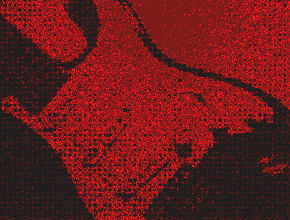I’m thrilled to announce that my article about headbanging has just been published in the journal Music Theory Spectrum! Here are the details. You can access the article for free at the link at the end of this post.
Bang your Head: Construing Beat through Familiar Drum Patterns in Metal Music
Stephen S. Hudson
Music Theory Spectrum, Volume 44, Issue 1, Spring 2022, Pages 121–140, https://doi.org/10.1093/mts/mtab014
Published: 28 November 2021
Abstract
This article presents a theoretical framework for understanding headbanging to metal music as an embodied practice of perception and offers several analyses to demonstrate how specific patterns serve as a common core of rhythmic patterning in the genre. Listeners express metal’s flexible rhythmic style through headbanging, creating experiences of heaviness and community. This motion brings felt beats into existence, guided by what I call “metering constructions,” familiar rhythmic/motional patterns that are both schematic knowledge of music and embodied practices of perception. I define metering constructions through theories of embodied meter and cognitive linguistics. Two constructions, the backbeat and the phrase-ending 332, are used throughout rock, but distinguished in metal by characteristic drum patterns and motional qualities. Headbangers thus create and perform their own beat interpretation, what I call a “patchwork quilt of recognized rhythms” stitched together in various orders and combinations—sometimes resembling regular isochronous meter, sometimes not.
Here’s a link to this article on my Academia.edu page.
Standard access link: https://academic.oup.com/mts/article-abstract/44/1/121/6445145
Access for free, for personal research use only: https://academic.oup.com/mts/article/44/1/121/6445145?guestAccessKey=b9871065-0ca4-455e-b8cd-fcfa70c04222
If you are part of a university or other research institution, please consider asking your institution to subscribe to Music Theory Spectrum to support their continuing publication of cutting-edge music theory research, instead of using the free link! 🙂
